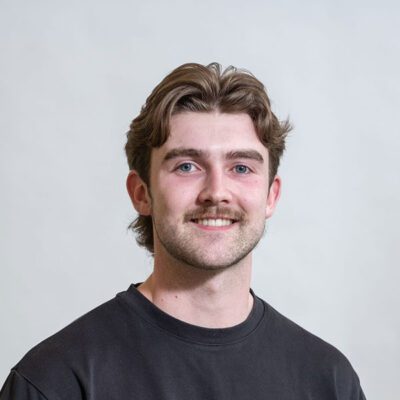
I enjoy transforming abstract ideas into tangible and functional designs that seamlessly blend aesthetics with functionality.
Final Project
P.E.C.D
The Pattern Evidence Collection Device was designed for use by forensic practitioners to collect and process pattern evidence (footwear impressions) at a crime scene. The device was designed in response to the outdated methods currently employed to capture this type of evidence such as casting or photography.
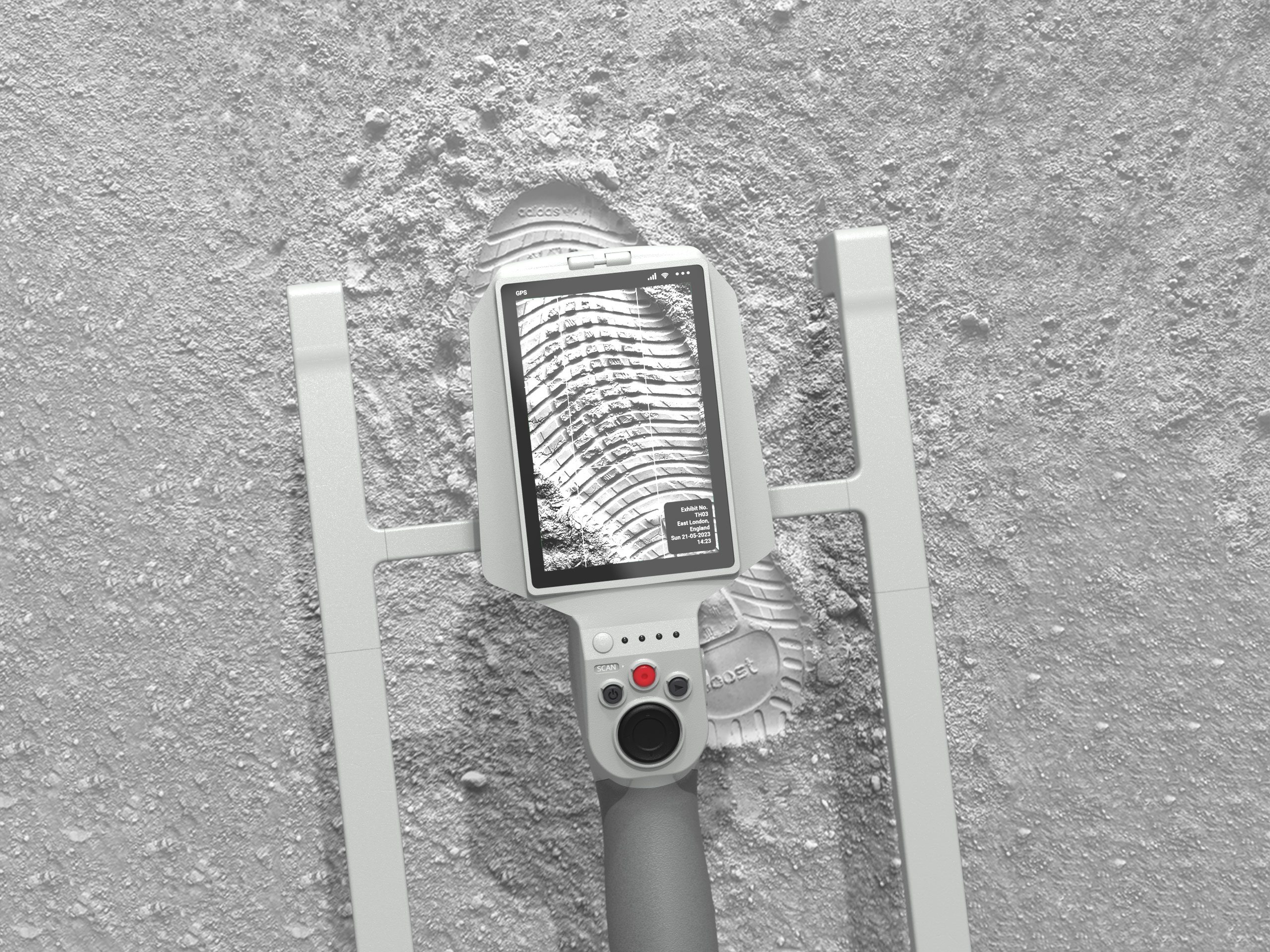
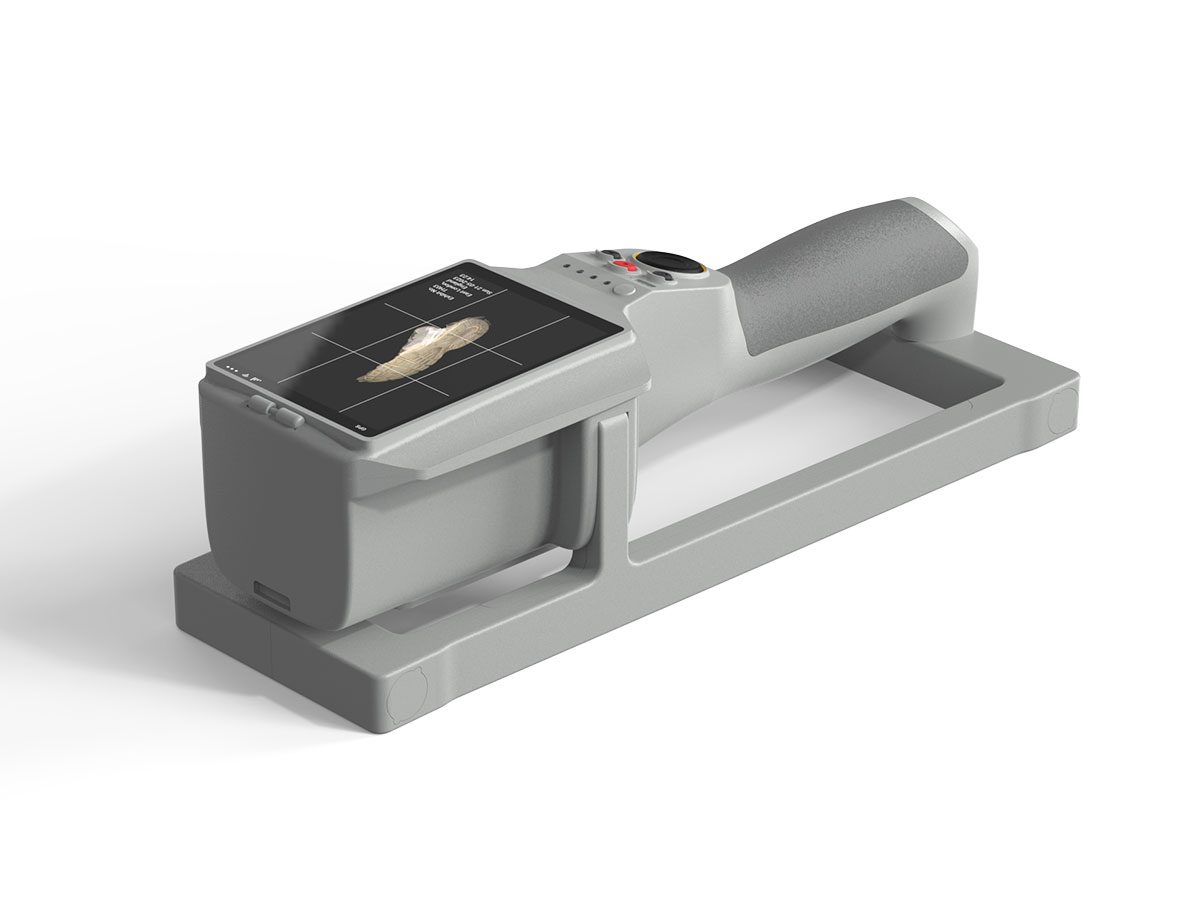
Technology
The solution uses photogrammetry to create a 3D model of the evidence, which is searched against the manufacturer’s database, offering a match rating. A scan of the suspect’s shoe can be created to confirm the match, all whilst still at the scene. An integrated frame allows for mobile or stationary use.
The Interface
The simple interface is composed of four main buttons for navigation, power, initiating the scan and remotely sending the captured evidence. The switch to open the frame is located on the adjacent face to the interface to avoid accidental opening. A screen has been included for real-time feedback, evidence examination and database searching.
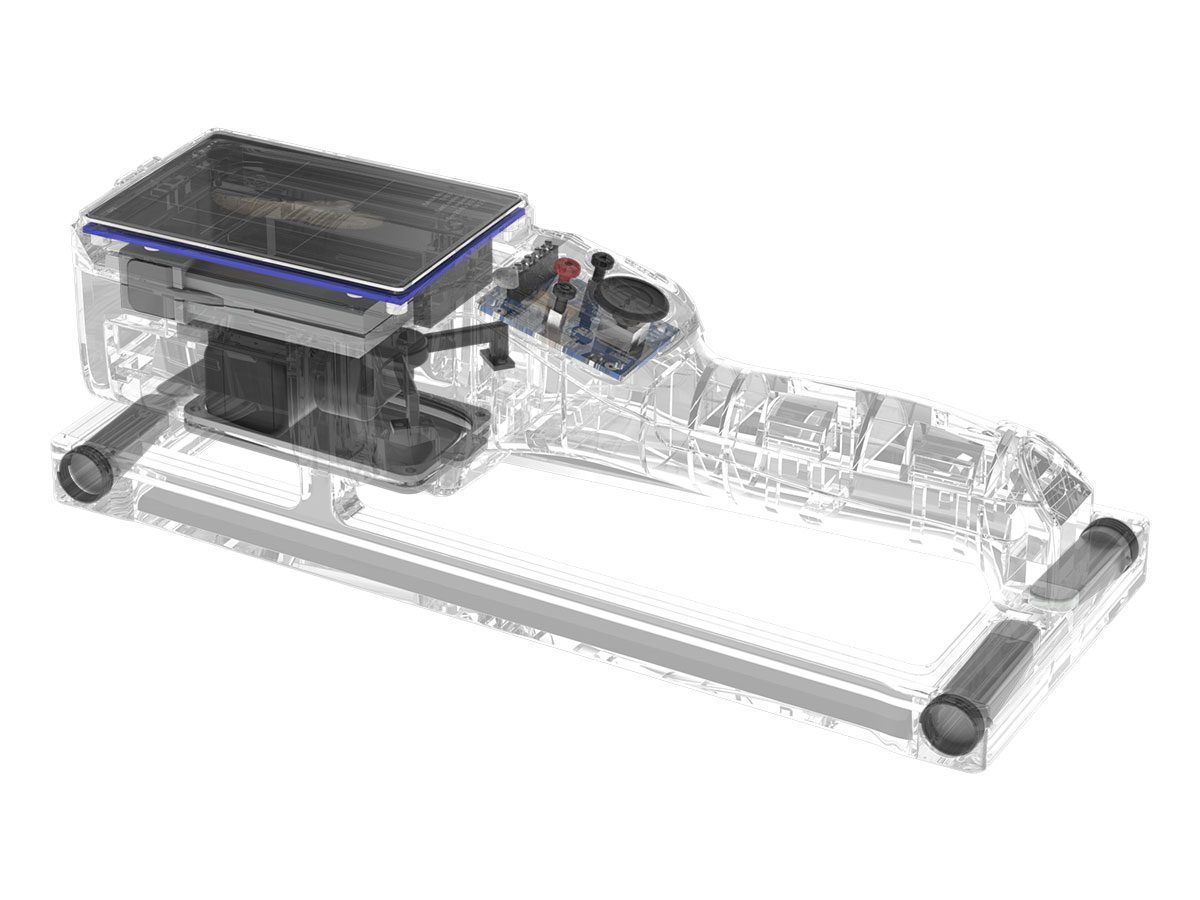
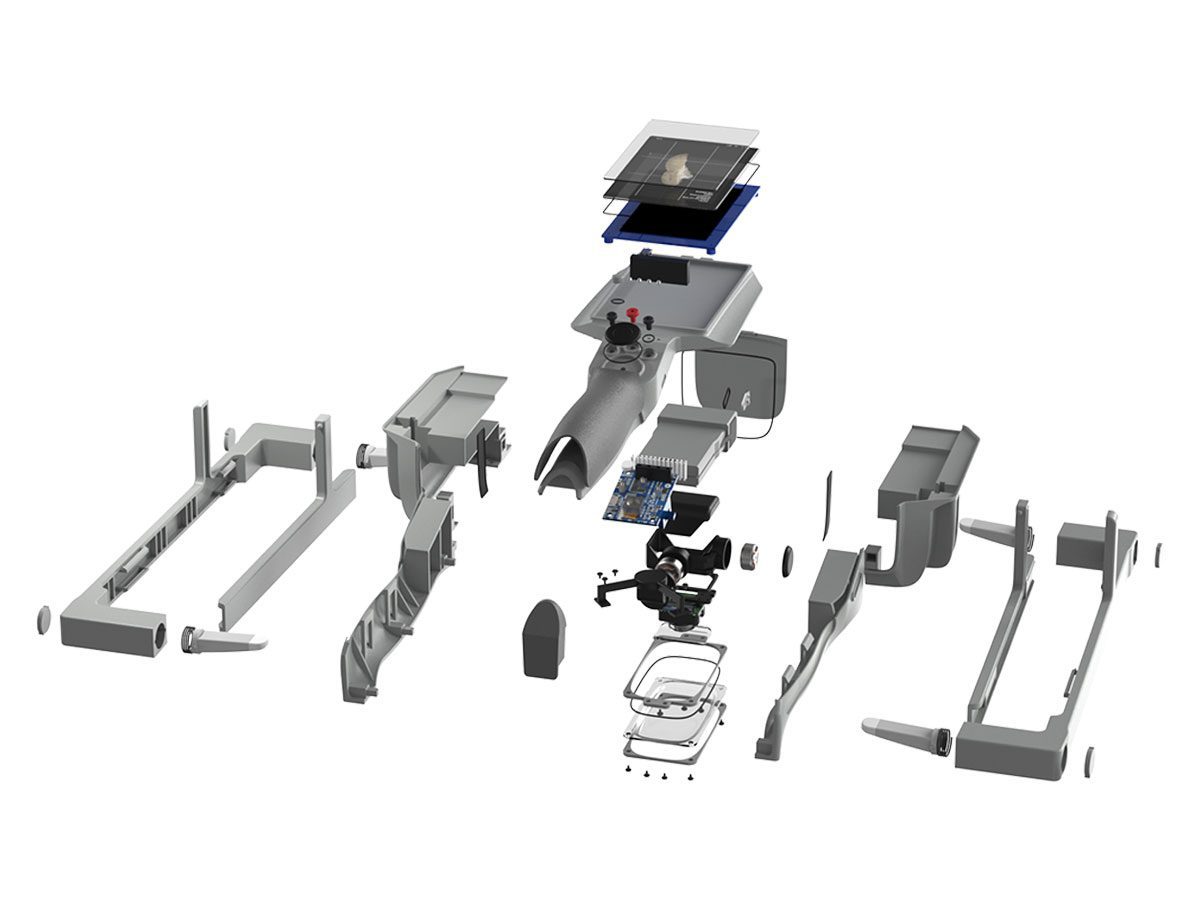
Exploded View
Battery life can be checked by pressing the button which illuminates the LEDs. A high resolution camera attached to a gimbal mount creates the necessary two axis movement. Images are created at each increment and stitched together to create the 3D model.
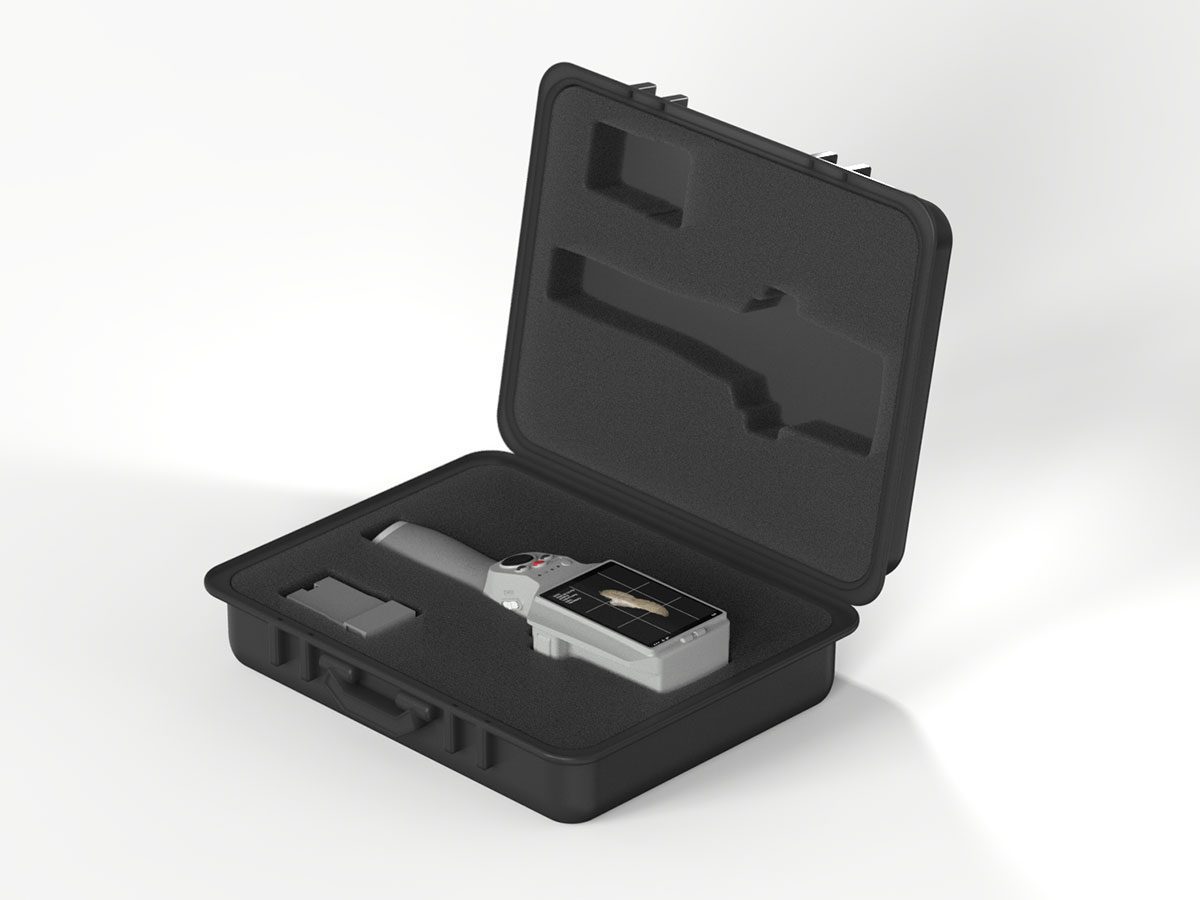
Storage
P.E.C.D significantly reduces the amount of time it takes to process the evidence at a crime scene. The opportunity for human error is also significantly reduced resulting in more evidentially robust exhibits and a greater chance of an arrest being made.
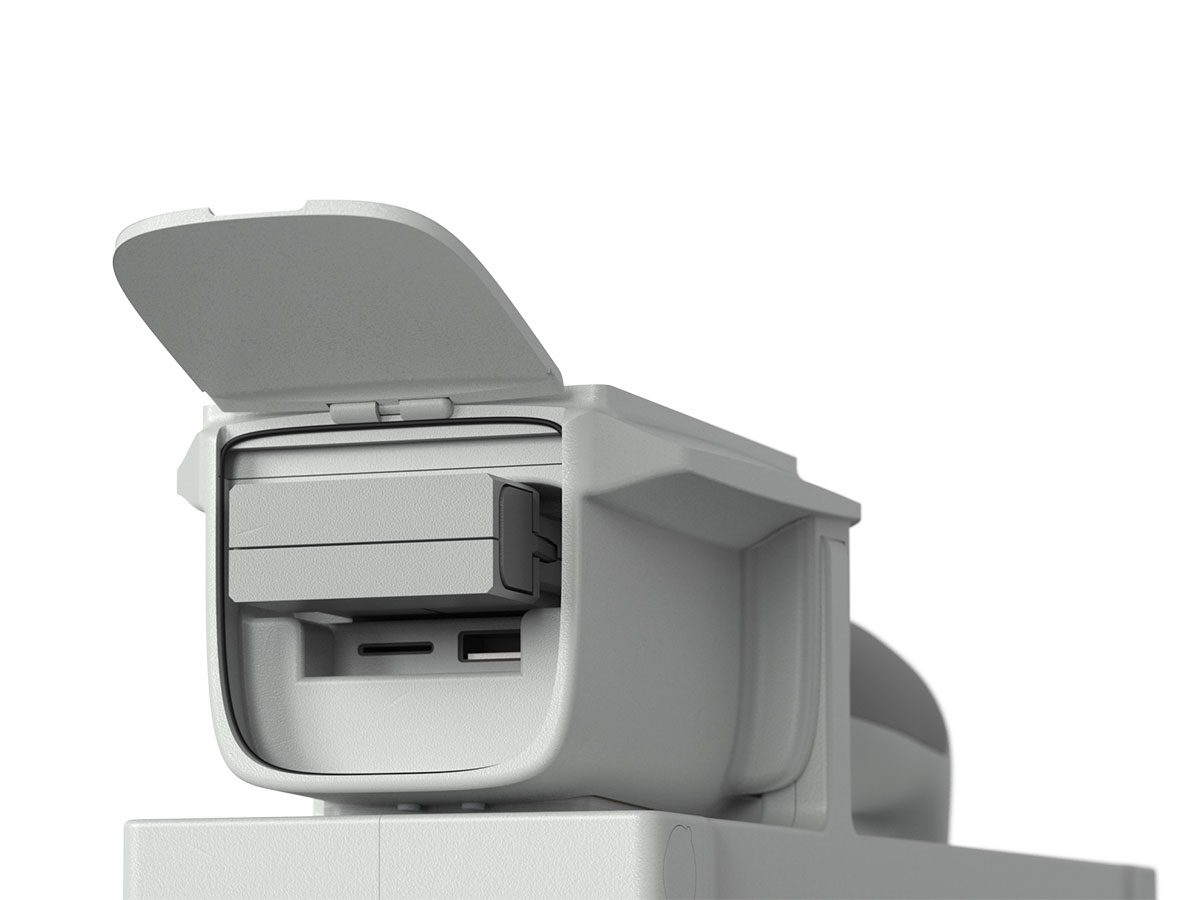
Charging and Ports
A hatch at the front of the device gives access to the removeable, rechargeable, battery which is ejected by pressing against the front face. The SD card and USB port for evidence transfer can also be found within this cavity.
Journey to the Show
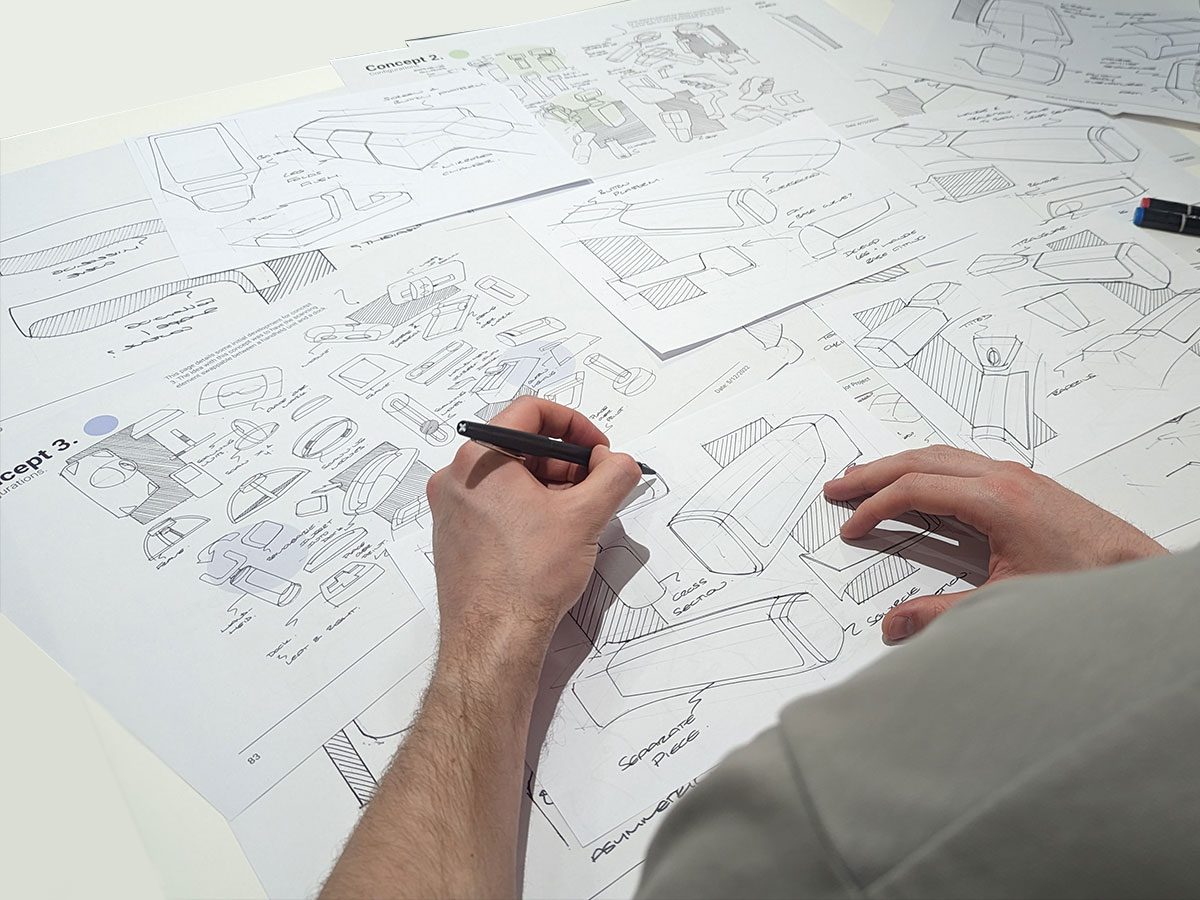
To support my selected project specialism of aesthetics, sketching was utilised to rapidly explore forms, details and features. These informed the prototyping process and subsequently the final design.
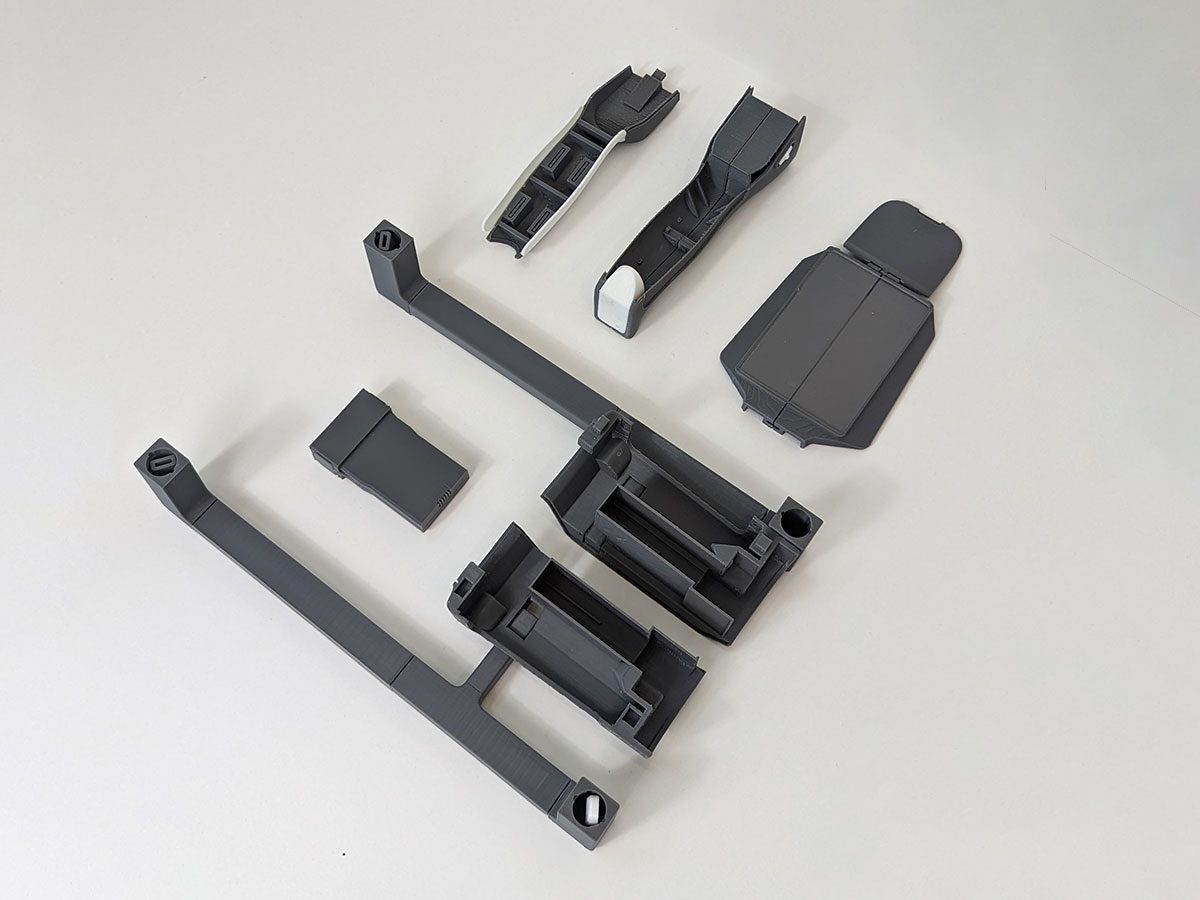
The final prototype was 3D printed and assembled using snap-fits. This allows for the prototype to be disassembled, exposing the internal geometries. A range of filaments were used to mimic the color of each specific part.
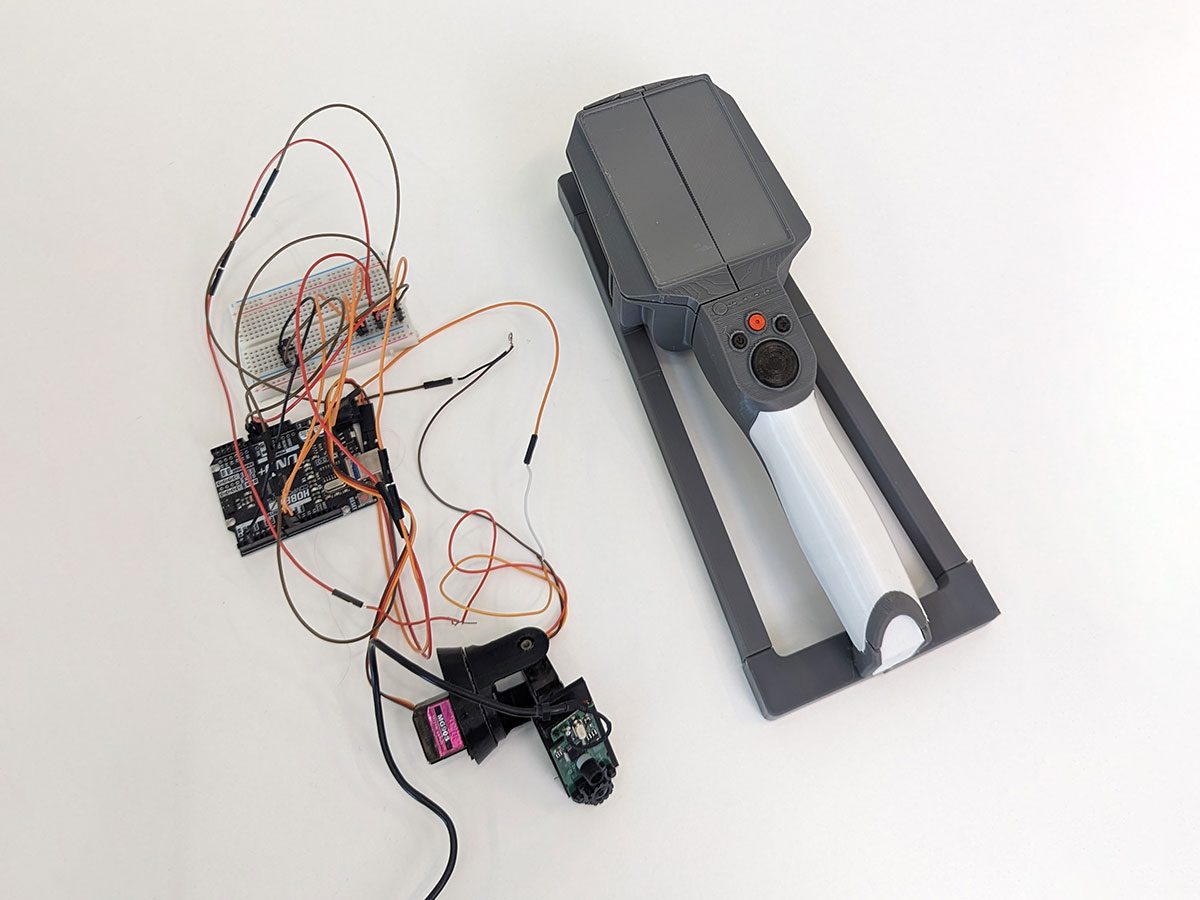
An electronic model was created alongside the main prototype to test and consolidate the camera module. A webcam was bought, disassembled and integrated to simulate the evidence capture. This was attached to a mount controlled by two servos to create the required movement.
Other Projects
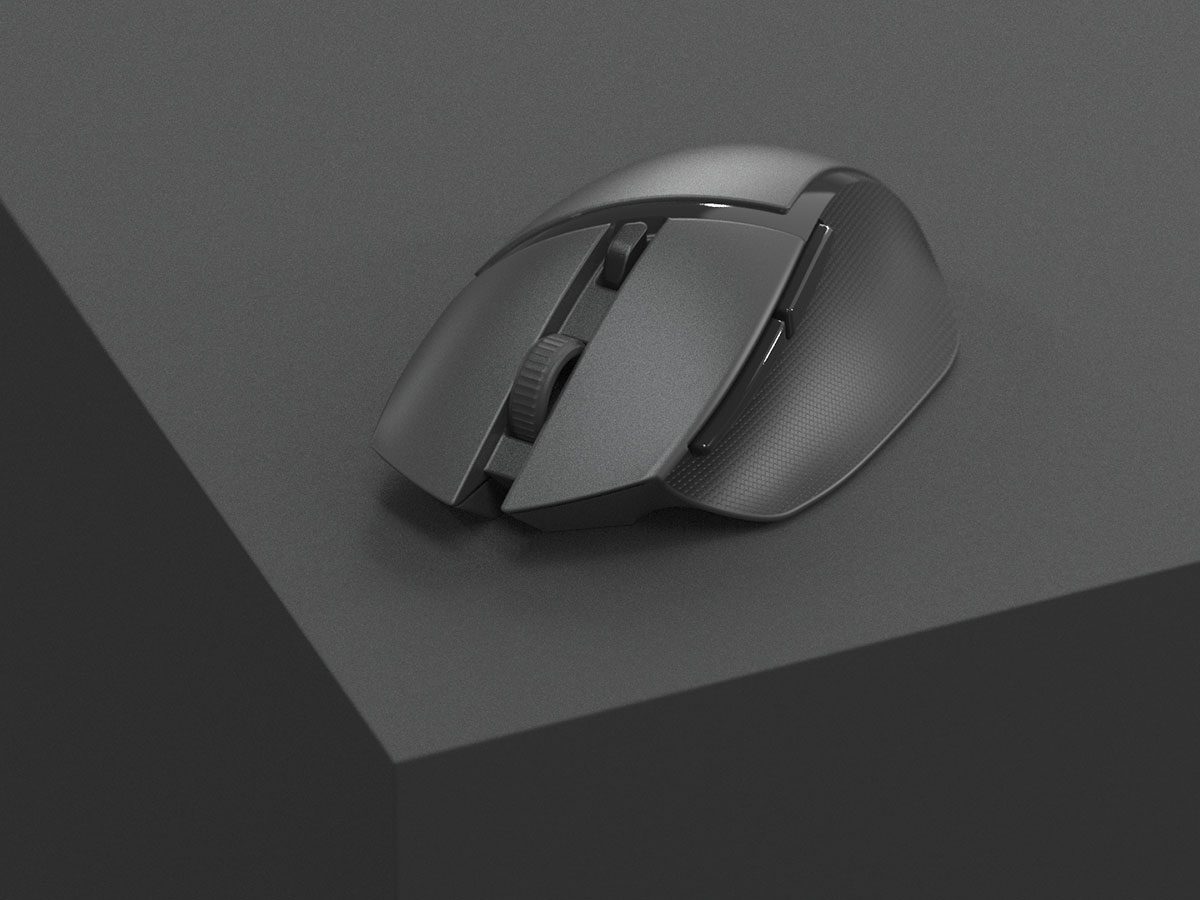
Render Practice
To improve my visualisation skills, I have developed a keen interest in Keyshot. I have explored materials, textures and environments to produce higher quality results and bring my concepts into reality.
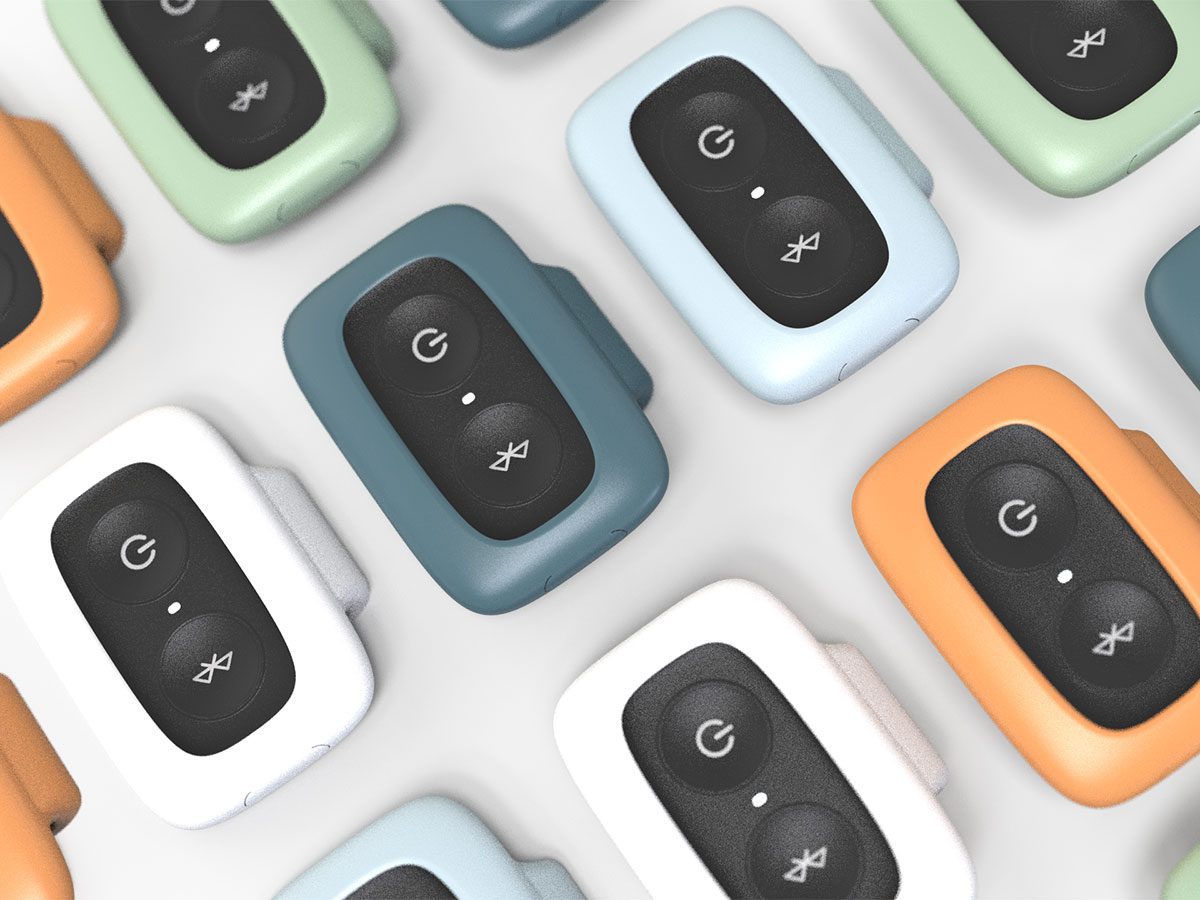
Design Week
A wearable device to encourage people with sprains to self-treat the condition without attending A&E and to foster preventative care. This was done in response to PDD’s live project brief to reduce the strain on the NHS.
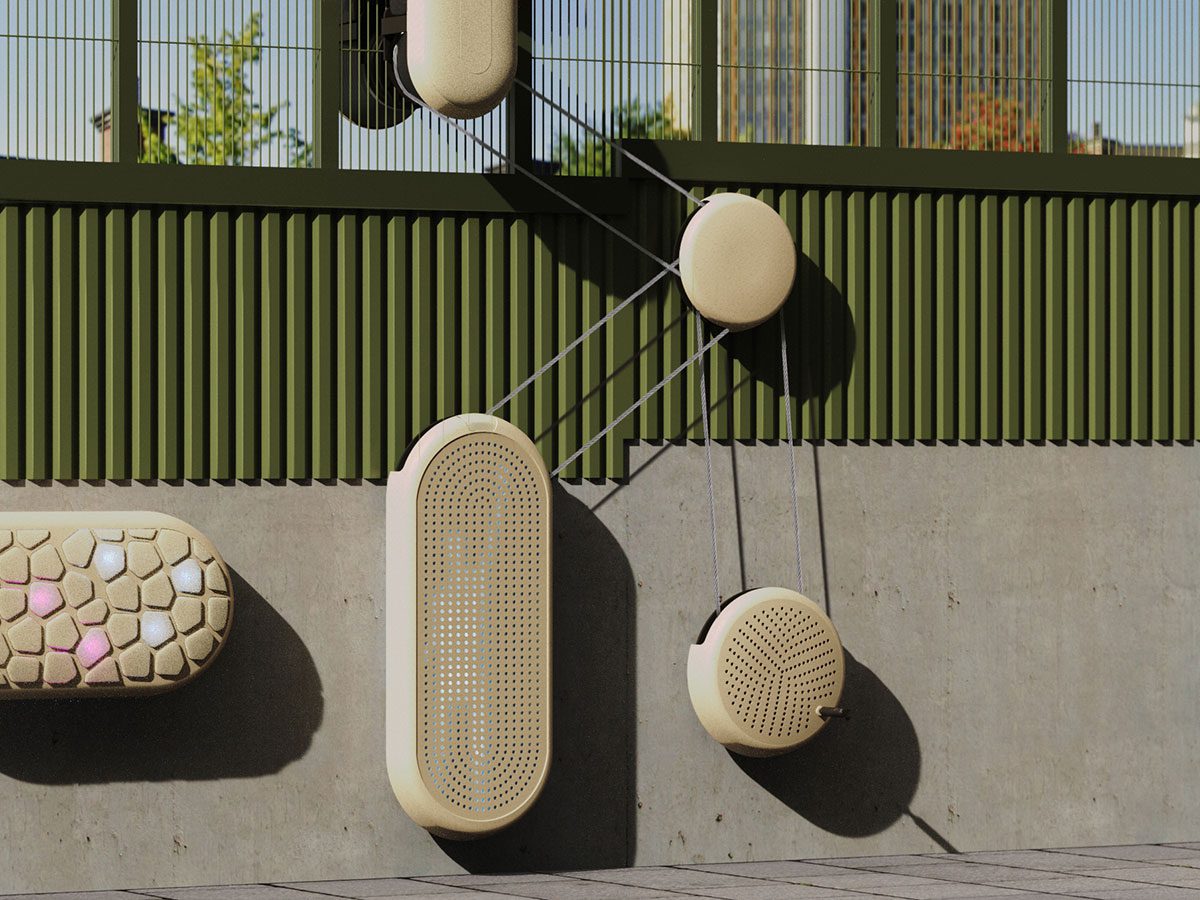
Industrial Design Studies
A design project in response to the RSA brief, ‘Planet Generation’. Our aim with this project was to create an “enticing pod network which helps heal divides using nature as a neutral catalyst, offering playful and rewarding interactions that jointly benefit the individual, community and local biodiversity.“
Awards
- ’22 Diploma In Professional studies – Issued by Loughborough University
- ’20 – Starpack Awards – Gold award
Work Experience
’21- ’22 – Junior Product Designer at Idea Reality (Product Design Consultancy)
During my year on placement, I had the opportunity to take the skills that I had gained from my degree and apply them to real design briefs. I actively participated in collaborative design projects and worked closely with clients, experienced designers, and engineers. Through client interactions, I learned effective communication and presentation skills. I gained proficiency in various design software and tools, enhancing my technical knowledge. Overall, my year at Idea Reality was a valuable and comprehensive learning experience in the field of Industrial design.
Visionary Thinkers
Visionary Creators
Visionary Makers